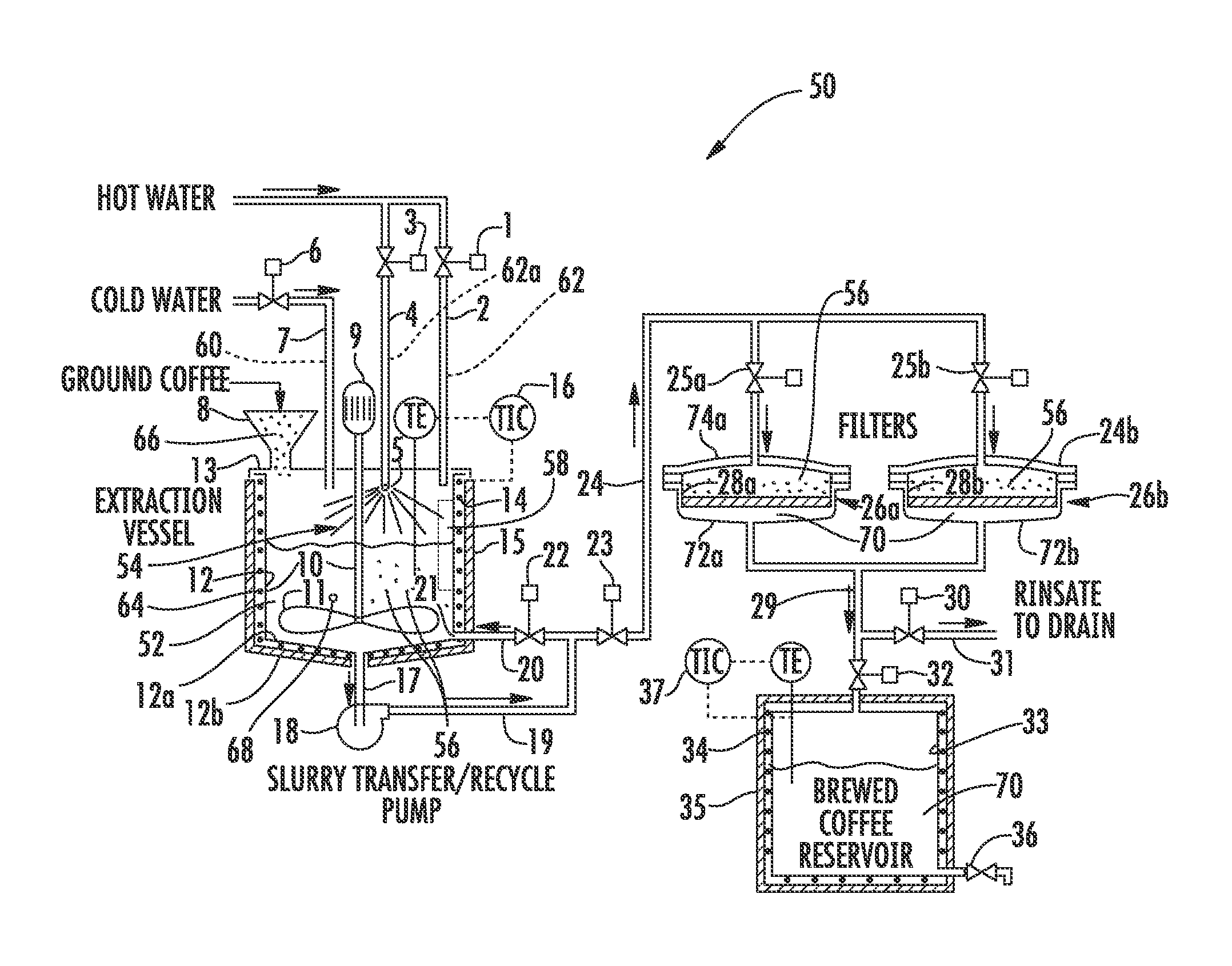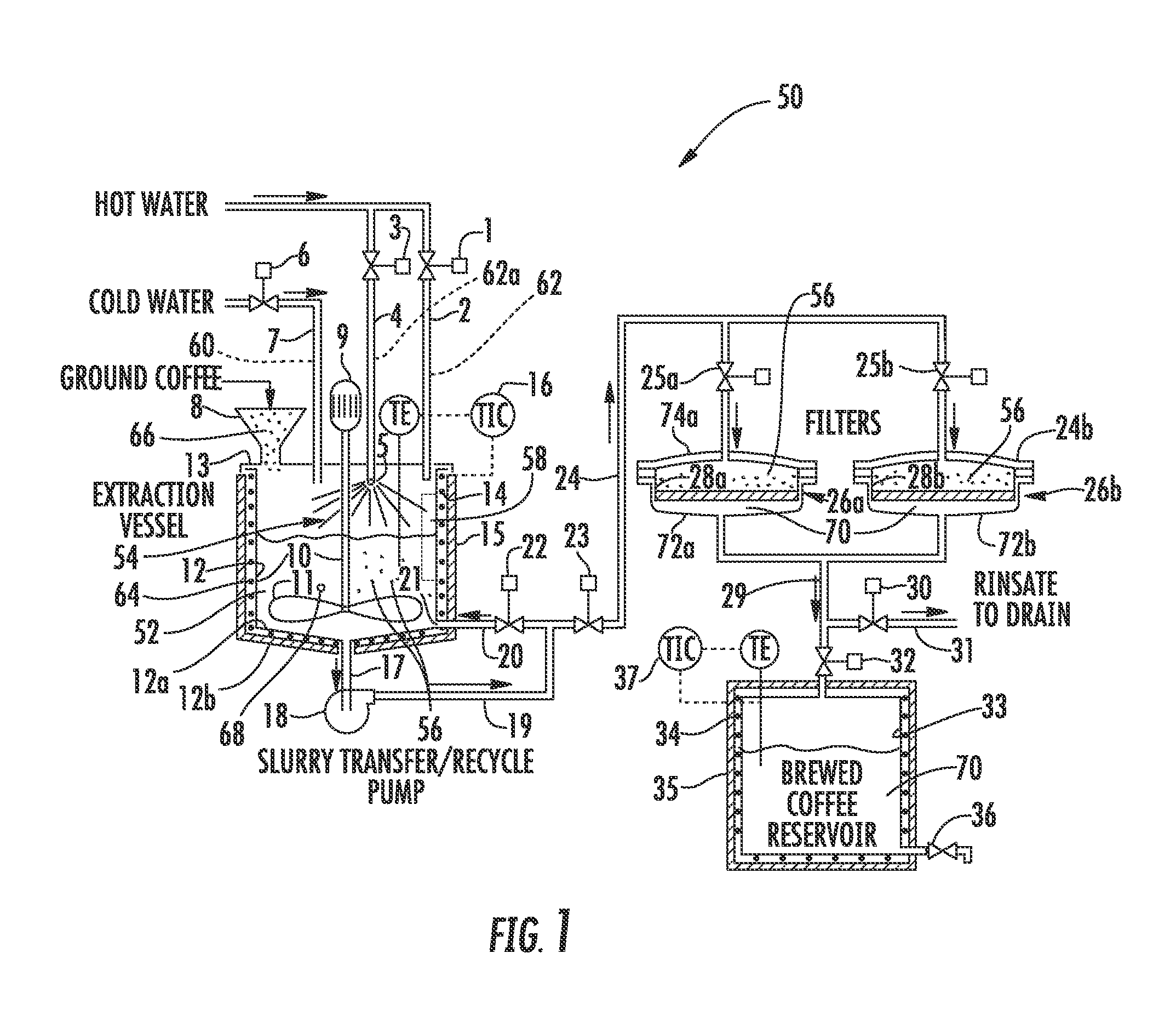Beverage brewing process and system
a beverage and process technology, applied in the field of beverage brewing process and system, can solve the problems of insufficient time, coffee with strong sour taste, complicated problems, etc., and achieve the effect of not working in a commercial setting, and avoiding the formation of a complex system
- Summary
- Abstract
- Description
- Claims
- Application Information
AI Technical Summary
Benefits of technology
Problems solved by technology
Method used
Image
Examples
third embodiment
[0038]The beverage brewing process and system of the present invention preferably consists of a continuously and gently mixed coffee extraction vessel in which a suspension of the solids in liquid is maintained, a pump (positive pressure) to transfer the slurry, and a filter to separate the suspended solids in the slurry from the brewed liquid. An alternative to a pump to transfer the slurry from the extraction vessel to the filter and to separate the solids in the slurry from the liquid is via a vacuum pump. A third embodiment consists of gravity transfer and filtration of the slurry and involves no positive pressure pump or vacuum pump. Each of the three embodiments of the invention is described and illustrated herein. Each unit operation is separately controlled to accommodate any type of ground beverage solids of any grind size and any desired brew time.
Option 1: Slurry Transfer by Pump
[0039]Referring first to FIG. 1, a first embodiment 50 of the present invention is shown. A sc...
embodiment 100
[0052]For the embodiment 100 in FIG. 2, when coffee extraction is complete based on the desired brewing time selected by the user, the vent valve 104 closes, the vacuum pump inlet valve 106 opens, and the vacuum pump 102 automatically turns on. As air is evacuated from the coffee reservoir 108 creating a vacuum, with respect to atmospheric pressure, coffee slurry 68 flows from the bottom of the extraction vessel 12 through line 17 and through either valve 18a or 18b to one of the parallel in-line filter vessels 26a and 26b. Valves 18a and 18b can be set to direct slurry 68 to either filter vessel 26a or 26b. For example, one of the filters 26a, 26b can receive slurry 68 while coffee grounds 56 are being removed from the other filter. As an alternative approach to achieving vacuum, with valves 104, 18a and 18b closed, the vacuum pump 102 is first turned on to evacuate the filter vessels 26a, 26b and coffee reservoir 108. Then, prior to beginning the extraction process, when the desir...
PUM
 Login to View More
Login to View More Abstract
Description
Claims
Application Information
 Login to View More
Login to View More - R&D
- Intellectual Property
- Life Sciences
- Materials
- Tech Scout
- Unparalleled Data Quality
- Higher Quality Content
- 60% Fewer Hallucinations
Browse by: Latest US Patents, China's latest patents, Technical Efficacy Thesaurus, Application Domain, Technology Topic, Popular Technical Reports.
© 2025 PatSnap. All rights reserved.Legal|Privacy policy|Modern Slavery Act Transparency Statement|Sitemap|About US| Contact US: help@patsnap.com



